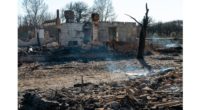The International Code Council suite of I-Codes are perhaps the most robust building codes in the world. Protecting life and property—the goal of the I-Codes—requires ongoing maintenance. Codes must adapt to new technology, and new building practices. Mistakes and unintended consequences must be regularly addressed. Working within an open and collaborative hearing process, the Gypsum Association worked to further several pertinent changes to the 2021 International Building Code, 2021 International Residential Code and 2021 International Fire Code.
One change that the GA submitted involved references to ASTM C1629/C1629M Standard Classification for Abuse-Resistant Nondecorated Interior Gypsum Panel Products and Fiber-Reinforced Cement Panels, last updated in 2019. This is the standard for evaluation of abuse and impact resistance for gypsum panels. As noted in the scope of ASTM C1629/C1629M, “This standard is a method of classifying gypsum panel product performance and is not intended to classify systems for abuse resistance.”
Unfortunately, several prior editions of the IBC—including the 2018 version—inaccurately referenced ASTM C1629/C1629M causing confusion. When discussing abuse and impact resistance, the IBC referred to walls making up interior exit staircases and hoistways as “systems” that needed to meet abuse and impact resistance criteria. As a result, designers and code officials were unnecessarily requesting system test reports. Of course, the C1629/C1629M method evaluates product performance, not system performance. Fortunately, changes have been made to reference panel performance only. Now the 2021 IBC accurately reflects ASTM C1629/C1629M.
A Sound Consistency
Consistency between the code and referenced documents is a persistent issue, and when it involves terminology, a lack of consistency can lead to confusion in the field. The GA successfully advocated for changes in terminology used in the IBC and the IFC. The terms “gypsum board” and “gypsum panel product” were updated to align with code-referenced ASTM standards and code-referenced GA literature. Additional terminology changes were inclusion of definitions for “glass mat gypsum panel,” “gypsum sheathing,” “gypsum wallboard,” and “type X gypsum wallboard.” While these terms were already used in the code, the addition of specific definitions provides clarity. Making these changes was the best way to ensure codes and standards are read and interpreted in conformance with one another.
Further, references to GA documents within the IBC were updated. GA-253 Application of Gypsum Sheathing was updated to cite the 2018 edition, as was GA-600 Fire Resistance and Sound Control Design Manual and GA-216 Application and Finishing of Gypsum Panel Products. This ensures the most recent and up-to-date versions of these documents are consulted.
Acoustical Tests
The GA, in partnership with acoustical experts, was also successful in pressing for corrections to acoustical tests. For several cycles, the IBC has required sound tested systems for certain occupancies and conditions. These tested systems could be specified based upon prior lab testing, or field tested post-construction. However, the code incorrectly applied the lab test in both situations. This has been corrected. Now, appropriate field tests for sound transmission are included in the code, eliminating confusion.
One code change the GA was not involved in but is of note, was the elimination of fire retardant coated wood products from the IRC. These products, unlike gypsum or fire retardant treated wood, are not fire resistant throughout. Fire retardant coated wood products already are excluded from the IBC.
Finally, a series of changes will allow for the construction of so-called “tall wood buildings.” TWBs utilize mass timber elements for the structural members, rather than steel or concrete as is most common. TWBs have very specific requirements for encapsulation of members, fastenings, structural connections, and etc. This opens up a unique construction opportunity in the market and brings a technology seen in Europe to a broader audience.
The GA is committed to keeping building codes pertinent and up-to-date in the areas that impact our industry, while upholding the major tenet of the code—maintaining life safety. Speaking of life safety, remember, May is Building Safety Month. Join the association in this month-long safety awareness event. Plan a safety event for your employees in May or work to educate your community. Find ideas at iccsafe.org. The GA looks forward to its sponsorship of Week 3: Resiliency. Sustainability. Innovation.









